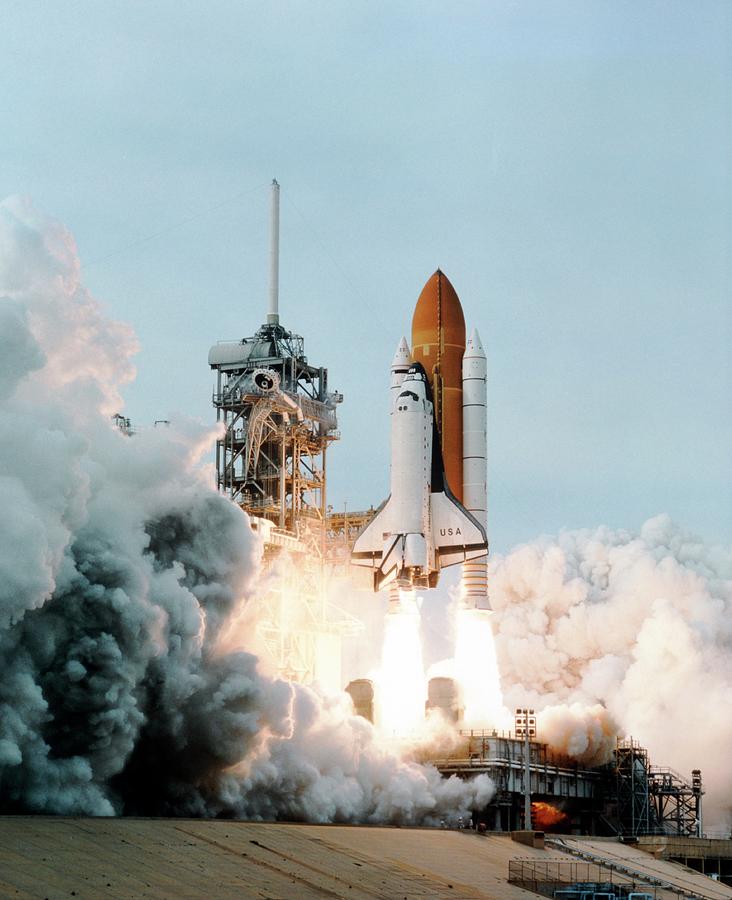

Once it is heavy enough, MLP-1 will be picked up by one of NASA's two crawler-transporters and driven along the river rock-covered crawlerway that extends from the VAB to the launch pad. MLP-1 (ML-3) is presently being loaded with concrete blocks to simulate the mass of the SLS rocket and its launch umbilical tower. So to me, there's not much really to salvage unless you're going to have a couple of thousand pound piece of plate that might have a significant MLP '2' number on it," he said.Īt present, there are no plans for MLP-2's twin siblings to meet the same fate. "If you've never been inside one of the MLPs, it's all equipment for the job that it does. "To my knowledge there is nothing small enough or significant enough," said Tenhoff. "The agency did not get any responses to the query to preserve any part of the MLP-2, therefore the decision was ultimately made to move on with the demolition," a NASA spokesperson said. The whole process is expected to take about a month.Īccording to a statement provided by NASA, an opportunity was extended to outside sources like the Smithsonian to gage interest in keeping any part of MLP-2 for historic preservation purposes. "What they're basically going to do is to cut it down in size, top to bottom from the outside, and just keep trimming it down." "They are going to use excavators with hydraulic shears," Tenhoff described.

Frank-Lin Services of Brevard was contracted by NASA to demolish MLP-2. space station, Skylab, departed for Earth orbit and from where every space shuttle orbiter but the first (Columbia) began its first mission will soon be no more.

So the 25-foot-high, 160-foot-long and 135-foot-wide (8 by 50 by 40-m) platform from where the Apollo 9 and Apollo 12 crews left the planet, where the first U.S. "The only other place we have mounts would be at the launch pad, but it would be in the way if we left it at the pad," said Tenhoff. A new mobile launcher, ML-1 (not to be confused with the Apollo ML-1, which became the shuttle program's MLP-3) was completed in 2018.Ĭonstruction of a new Artemis ML-2 began in July 2020, and when it is complete, the available ML and MLP parking spots inside and around the Vehicle Assembly Building (VAB) will be taken. (Portions of the ML-2 and ML-3 umbilical towers were used to build the fixed service structures used to launch the space shuttle.)įor the Artemis program, NASA's current effort to return astronauts to the moon and then eventually land humans on Mars, the legacy mobile launch platforms were deemed incapable of supporting the combined mass of the agency's new Space Launch System (SLS) rocket and an umbilical tower to support its launch. When the Apollo program ended, the mobile launchers were stripped of their launch umbilical towers and became mobile launch platforms (MLPs) used by the space shuttle. "We ran out of parking spots, so that's why we chose to get rid of MLP-2," Tenhoff said in an interview with collectSPACE.īetween 19, Ingalls Iron Works built three mobile launchers to transport and support the launch of NASA's Saturn V and Saturn IB rockets. "That there's a contract out now to build Mobile Launcher-2, something had to go." We're getting rid of it because we're running out of parking places," said Scott Tenhoff, project manager for MLP-2's demolition at Kennedy Space Center. "We're getting rid of MLP-2 now not because there were no customers. Or if not that, it might continue to serve some purpose, as the two other Apollo and shuttle legacy mobile launch platforms have and are doing. Given its role in those two missions, and the 49 other Apollo, Skylab and space shuttle launches that it supported between 19, it might be expected that MLP-2 would be retired as a museum artifact. Fifteen years later, MLP-2 was the literal "surly bonds of Earth" from where the space shuttle Challenger's STS-51L crew tragically lifted off for the last time. Mission: SpaceX Crew-5 mission to the International Space station as part of the Commercial Crew Program.- One of the three large steel platforms that supported the launch of NASA's Apollo and space shuttle missions is now being demolished - due to a lack of space.įifty years ago this month, Mobile Launch Platform-2 (MLP-2, or as it was then referred to, Mobile Launcher-2 or ML-2) provided the surface from where the Apollo 14 crew left Earth to land on the moon.Vehicle: Space Launch System (SLS) rocket and Orion spacecraft.Launch Site: Space Launch Complex-41 at Cape Canaveral Space Force Station.


 0 kommentar(er)
0 kommentar(er)
